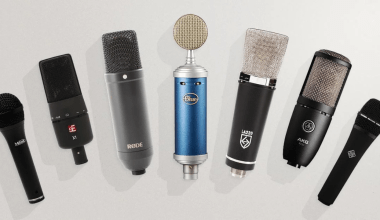Humming exercises are one of the simplest ways to improve your voice. Imagine making a simple “hmmm” sound and feeling your voice get clearer, stronger, and healthier. Sounds easy, right? That’s because it is! Humming is like a workout for your vocal cords, just like stretching is for your body. And guess what? Anyone can do it—whether you’re a singer, a speaker, or just someone who wants a better voice.
In this guide, we’ll walk you through why humming is so good for your voice, how to do it, and even how to make it part of your daily routine. Let’s get started!
Why Should You Try Humming Exercises?
If you’ve ever struggled with your voice cracking, feeling tired after talking for too long, or simply wanting to sing better, humming exercises are for you. Here’s why:
1. Makes Your Voice Stronger
Humming helps strengthen your vocal cords. When your cords are stronger, you can sing or talk for longer without getting tired.
2. Improves Breathing
When you hum, you naturally learn to control your breathing. This is super helpful for holding long notes while singing or speaking clearly.
3. Relieves Tension
Have you ever felt tightness in your throat or jaw? Humming relaxes those muscles, making your voice flow smoother.
4. Warms Up Your Voice
Humming is the perfect warm-up. It gently wakes up your vocal cords, getting them ready for singing or speaking.
How to Do Humming Exercises: Step-by-Step
Ready to start humming? Here’s how you can do it easily at home:
Step 1: Find a Quiet Spot
Pick a place where you can focus. It could be your bedroom, living room, or even your car.
Step 2: Sit or Stand Comfortably
Sit straight or stand tall. Relax your shoulders and let your body feel loose.
Step 3: Take a Deep Breath
Breathe in through your nose. Feel the air filling your belly, not just your chest.
Step 4: Start Humming
Close your lips gently and make a “hmmm” sound as you exhale. Don’t push too hard; keep it soft and smooth.
Step 5: Play with the Pitch
Try humming a low pitch, then slowly move to a higher pitch. This stretches your vocal cords and warms them up.
When to Use Humming Exercises
Humming isn’t just for singers or public speakers. Here’s when you can try it:
- Morning Warm-Up: Start your day with 5 minutes of humming. It wakes up your voice.
- Before a Presentation: Humming calms your nerves and prepares your voice.
- Before Singing: Humming makes sure your vocal cords are ready to hit all the right notes.
- To Relax: Humming is soothing. Do it whenever you feel stressed.
Fun Facts About Humming
- Humming Helps Your Mood: The vibrations from humming can make you feel calm and happy.
- Great for Sinuses: If you have a stuffy nose, humming can help clear it up.
- Good for All Ages: Kids, adults, and seniors can all benefit from humming.
Different Types of Humming Exercises
Not all humming is the same. Try these fun variations:
1. Lip Trill Humming
Close your lips lightly and blow air through them while humming. It makes a buzzing sound like a motorbike!
2. Nasal Humming
Focus on making the sound come through your nose. This clears up nasal passages and improves tone.
3. Humming Scales
Use a piano or a music app to hum along to scales. Start from low notes and go higher, then back down. It’s like stretching for your voice.
How Does Humming Help Your Voice?
Humming does more than just sound nice. Here’s how it works:
- Vibrations Heal: The gentle vibrations from humming improve blood flow to your vocal cords.
- Improves Resonance: Resonance is the richness of your voice. Humming trains your voice to sound fuller and clearer.
- Strengthens Muscles: Just like exercise makes your body stronger, humming strengthens the muscles around your vocal cords.
Real-Life Stories: How Humming Changed Lives
Priya, a Singer
“I used to lose my voice after singing for long hours. Then I started humming exercises. My voice feels stronger, and I can hit high notes without straining.”
Arjun, a Teacher
“Talking all day used to make my throat sore. Humming every morning has made a huge difference. Now, I feel more confident in class.”
Tips to Get the Most Out of Humming Exercises
- Stay Hydrated: Drink water before and after humming to keep your vocal cords happy.
- Practice Daily: Even 5 minutes a day can make a big difference.
- Relax Your Body: Keep your shoulders, neck, and jaw loose while humming.
- Don’t Force It: If a pitch feels uncomfortable, don’t push. Stay in a range that feels good.
Common Mistakes to Avoid
- Humming Too Loud: Keep it soft and gentle. Loud humming can strain your voice.
- Skipping Breathing: Remember to breathe deeply before each hum.
- Practicing When Sick: If your throat is sore, rest instead of humming.
FAQs About Humming Exercises
Q: Can anyone do humming exercises?
A: Yes! Whether you’re a singer, a speaker, or just someone who wants a better voice, humming is for you.
Q: How long should I practice?
A: Start with 5–10 minutes a day. Gradually increase as your voice gets stronger.
Q: Can humming help a sore throat?
A: Absolutely. Humming gently massages your vocal cords and can soothe irritation.
Q: Do I need any equipment?
A: Nope! All you need is your voice.
Add Humming to Your Routine
Here’s how you can fit humming into your day:
- While Showering: The steam is great for your voice, and you can hum along to your favorite tunes.
- During Yoga: Humming pairs well with meditation or deep breathing exercises.
- While Walking: Take a walk and hum softly to yourself.
Advanced Humming Techniques
If you’ve mastered the basics, here are some advanced tips:
Dynamic Humming
Start humming softly, gradually get louder, and then return to soft humming. This improves control.
Resonance Training
Focus on directing your humming vibrations to your chest, head, or face. This adds depth to your voice.
Final Thoughts: Why You Should Start Humming Today
Humming exercises are like magic for your voice. They’re easy, free, and can be done anywhere. Whether you want to sing better, speak clearly, or just relax, humming has something for you. Start small, practice daily, and watch your voice transform.
Related Articles:
For further reading, explore these related articles:
- How to Become a Successful Music Artist in India in 2024?
- Promo Cards on Spotify: A Game Changer for Artists
For additional resources on music marketing and distribution, visit Deliver My Tune.






